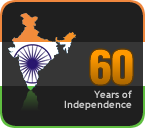I was very much taken by surprise when we entered our compartment (AC first class) at half past eight in the evening at Kathgodam railway station for our trip back to Delhi. My four grandchildren, my son and myself were on a holiday to Almora. The grandchildren had left for Delhi earlier. We were the last to leave the camp. I was naturally tired after a four to five days stay in the resort, walking up and down to the lounge, the dining room and a few steps this way and that way. A four to five hour drive in the mountain road in a taxi and a much needed Masala dosai in the Udipi hotel close to the railway station was all that was needed for one to look forward to the welcoming bed we had reserved on the Delhi bound train.
Our compartment was a four berther. Two of them were occupied by a couple who had already retired for the night. Our beds were there ready for us to lie down and go to sleep which I did immediately. Well this is the last word in luxury one could avail of in the railways of India today. We had travelled to Kathgodam from old Delhi by the same train. This train was supposed to start at 10.30.pm but it was delayed by two hours. Walking through a densely crowded platform and waiting there for such a long time made us all immune - to note and appreciate - the ready-made bed and other facilities. While waiting for the train to arrive at the platform, it was my five year old great grand daughter who set us an example by her good behaviour.
So what is new one may ask. This is how all AC first-class passengers are treated every day every route in the Indian Railways Well, I beg to differ We (again my son and myself) had a different and difficult experience two years back when we boarded the night train from Delhi to Chennai.
We had booked our berths early enough asking for two lower berths which we got confirmed too. As we entered our coach we were surprised to see that the two lower berths given to us were occupied by two persons who just refused to listen to what my son had to say, who just remained adamant and refused to vacate the seats. The TT was called who asked these two men to vacate the seats they had wrongly occupied - unnecessary hassle, trouble and waste of our time and energy. We had to wait for some time till fresh sheets and blankets were produced by an (even more exasperated than we were) attendant for us to settle for the night.
Then, on another journey with my son, from Madras Egmore to Thanjavur, my son had to give up his lower berth to a person who had just undergone by-pass surgery. He had been discharged from hospital that very day and was travelling back home all alone. The funny side was this patient was very eager to show me his surgery scar. I thanked him saying I was not interested.
Travelling for me was very different some sixty years back when India was under the British regime. Of course there were the three classes then - first, second and third (today there is no third class). But there were no air-conditioned coaches The upper-classes even in those days were not affordable for the common man. There were no reservations. And the seating arrangements in the third class were horrible ---- just four long wooden benches not very wide , two on both sides of the compartment, two in the middle with their backs touching each other.
In 1946 I had travelled in one of those third class compartment s with my six month-old baby, from Madras (Chennai) to Delhi sitting throughout night and day for more than fifty six hours. With me was my sister with her three month- old baby. We had as our escorts my sister’s mother-in-law and two brothers-in-law. The compartment was tightly packed with all sorts of women , men, children, with their various steel trunks, hold-alls -- a must for all railway journeys in those days -- and tiffin-carriers big enough to contain food to last for three days Not to forget the suraais for water which were very prompt in tilting and spilling their contents at the least provocation.
Once a person got up from the seat to go the loo that seat was sure to be occupied by one of the standing passengers. This meant the first person would have to stand till another person got up. Well, it was a bad experience for us, our first and last of that miserable kind. In those days there were no upper berths. There used to be racks where the boxes and bags were placed.
When India came under self- rule, travelling by trains also improved gradually. By 1960-1965 there were many compartments with upper- berths, I remember the journey I took with my children back in 1962 from Madras to New Delhi by the GT Express. We were travelling first-class and we were given a compartment with two lower berths and two upper ones There was a wash-basin in between the two lower berths and an attached bathroom. We had a very comfortable journey -- very relaxed.
Air-conditioned chair-cars were also tried and tested to suit the need of increased number of passengers to Delhi and Bombay (Mumbai now). More and more people started travelling as tourists too. AC chair-cars were first introduced in the Delhi- Madras line. My parents, my eldest sister, and myself with my two younger children travelled from Madras to Delhi to attend my niece’s wedding in Delhi. It was in-mid-summer. We felt the AC coaches were really a boon. We were too quick to judge. On our return journey once we reached Agra the air-conditioner failed and with no fresh air inside the coach we all had a difficult time, particularly my father who was well beyond seventy. Thank God, the mistake was soon corrected and we reached Madras without any more mishaps.
AC chair cars were a huge success in the Bombay-Delhi line. for It was only a 24-hour journey and it was running for quite some years Once the two- tier and three- tier A.C sleepers were introduced the chair cars became redundant.
In the 1940s and 1950s there was only the Grand-Trunk Express to and fro from Madras and Delhi. In the 1940s this train used to run only three days a week. Now the number of trains on each and every line has increased to meet the demands of the ever increasing travelers. Any train you board on any route, one finds not even a single empty seat. Rich or poor people are always on the move always on the go. The waiting list is sometimes longer than the trains. The trains are very long now. Most of the platforms are not long enough for these trains
I wonder what the future holds for the Indians travelling by trains.
Talking about trains brings to mind a joke my husband told me on my first train trip with him. Even if you’ve heard it before, please bear with me and laugh.
Once the Prince of Wales was travelling by train and in his compartment were two society ladies. As the journey wore on, they did their best to outdo each other in their attempts to impress His Highness, who was not at all amused. When the train passed through a tunnel, the Prince put the back of his hand to his mouth and made a kissing sound. Then he got off at the next station, saying, “To which of you delightful ladies do I owe that unexpected pleasure!” It left two very sore ladies in the compartment.





6 comments:
History of Indian Railways, thru Maiji's eyes. Interesting.
Very interesting. Were we really like Shashi Tharoor's cattle class in the 3rd class in those days? I suppose we should not complain about today's trains at all. Laloo zindabad
Very interesting! I read it and re read it a couple of times because I liked it so much but clearly forgot to put my comment! Well, here it is. Thanks so much for taking us all on a ride through "old" Indian Railways.
Like all your posts, Maiji, this is so beautifully evocative. I really enjoyed reading it.
Your writings take us into another time and age. I am glad to have found your blog.
I grew up in Pondy and loved those years. This blog is a great insight on the place I love , even before my parents landed there. Thanks for Sharing.
Post a Comment